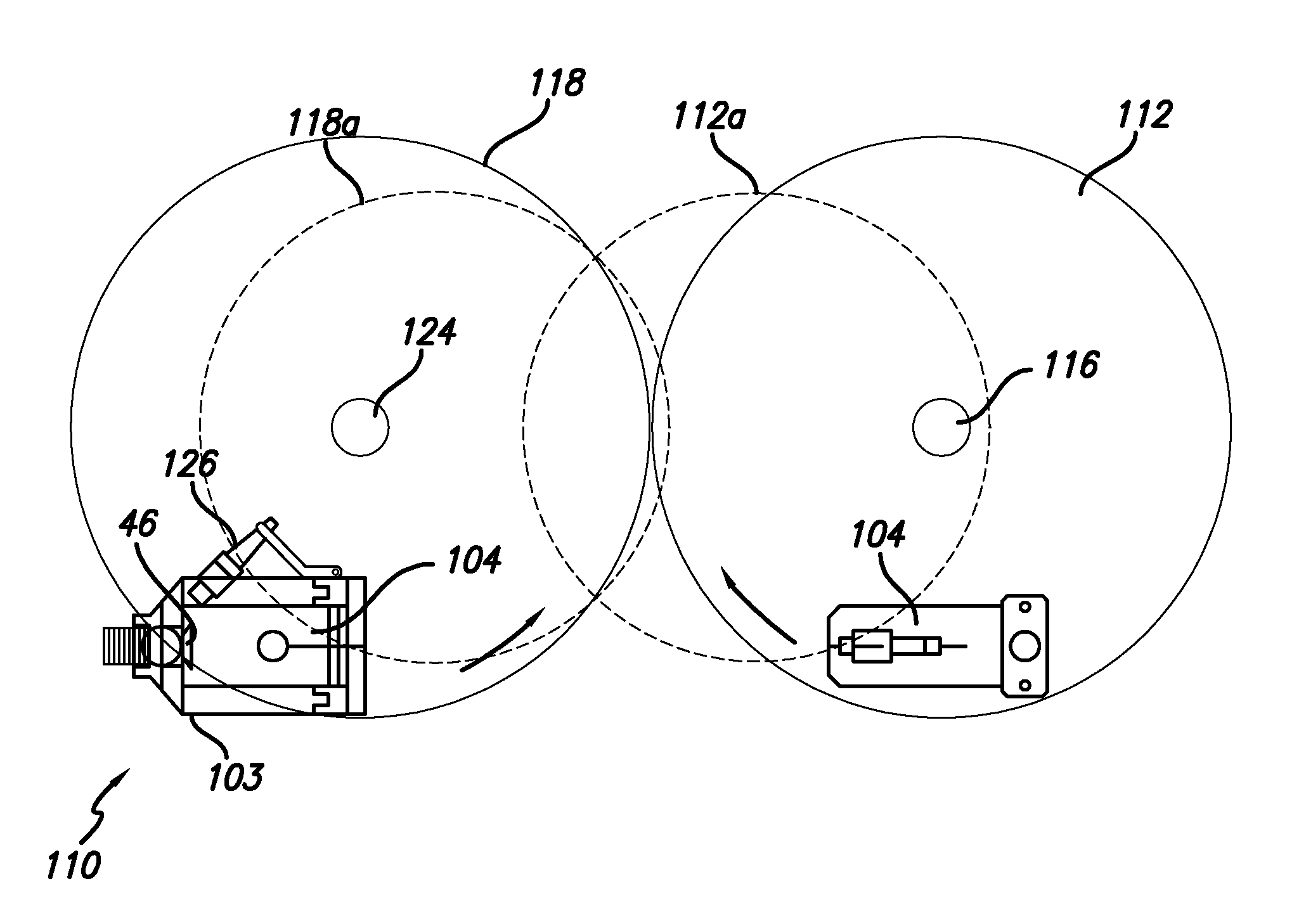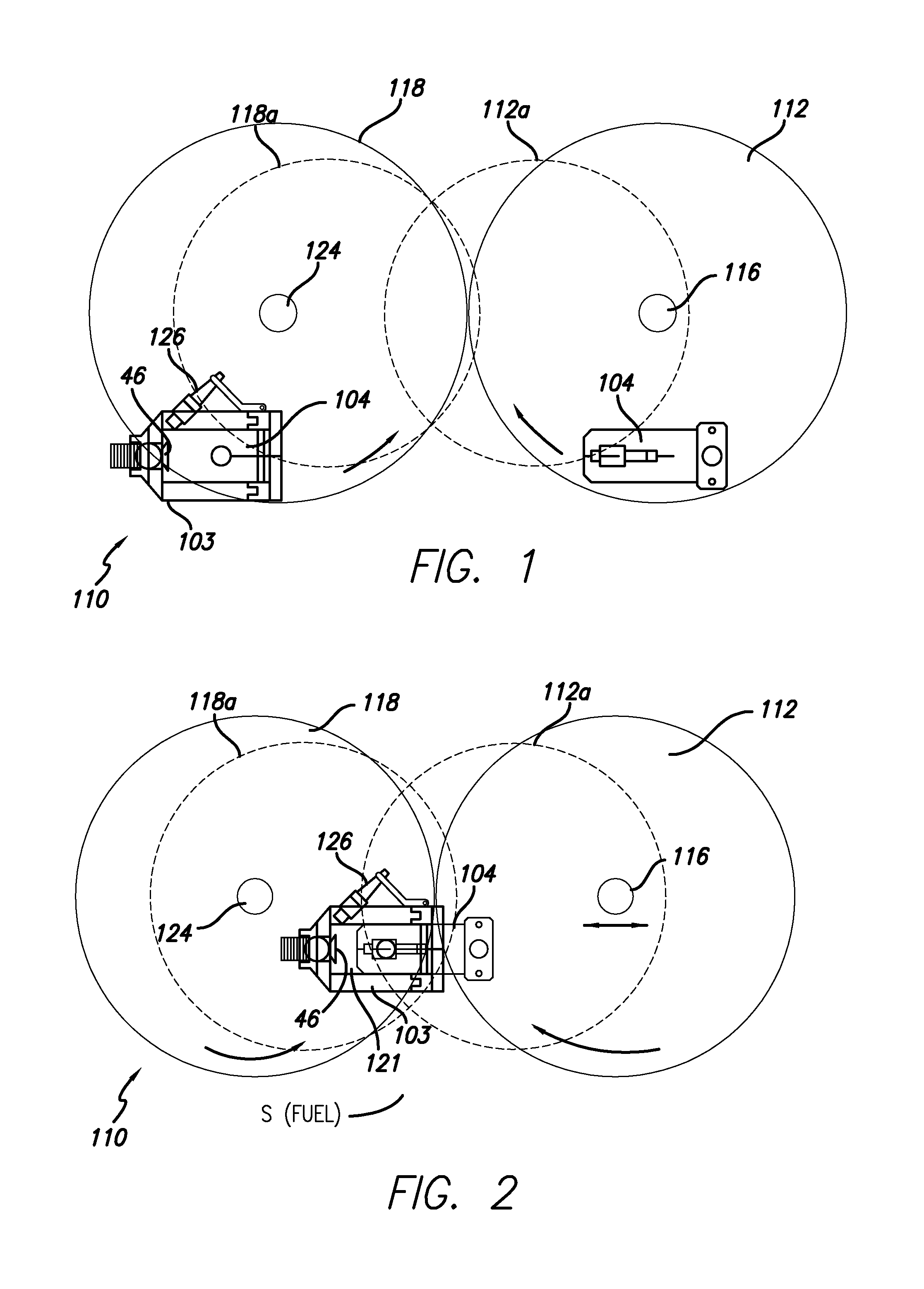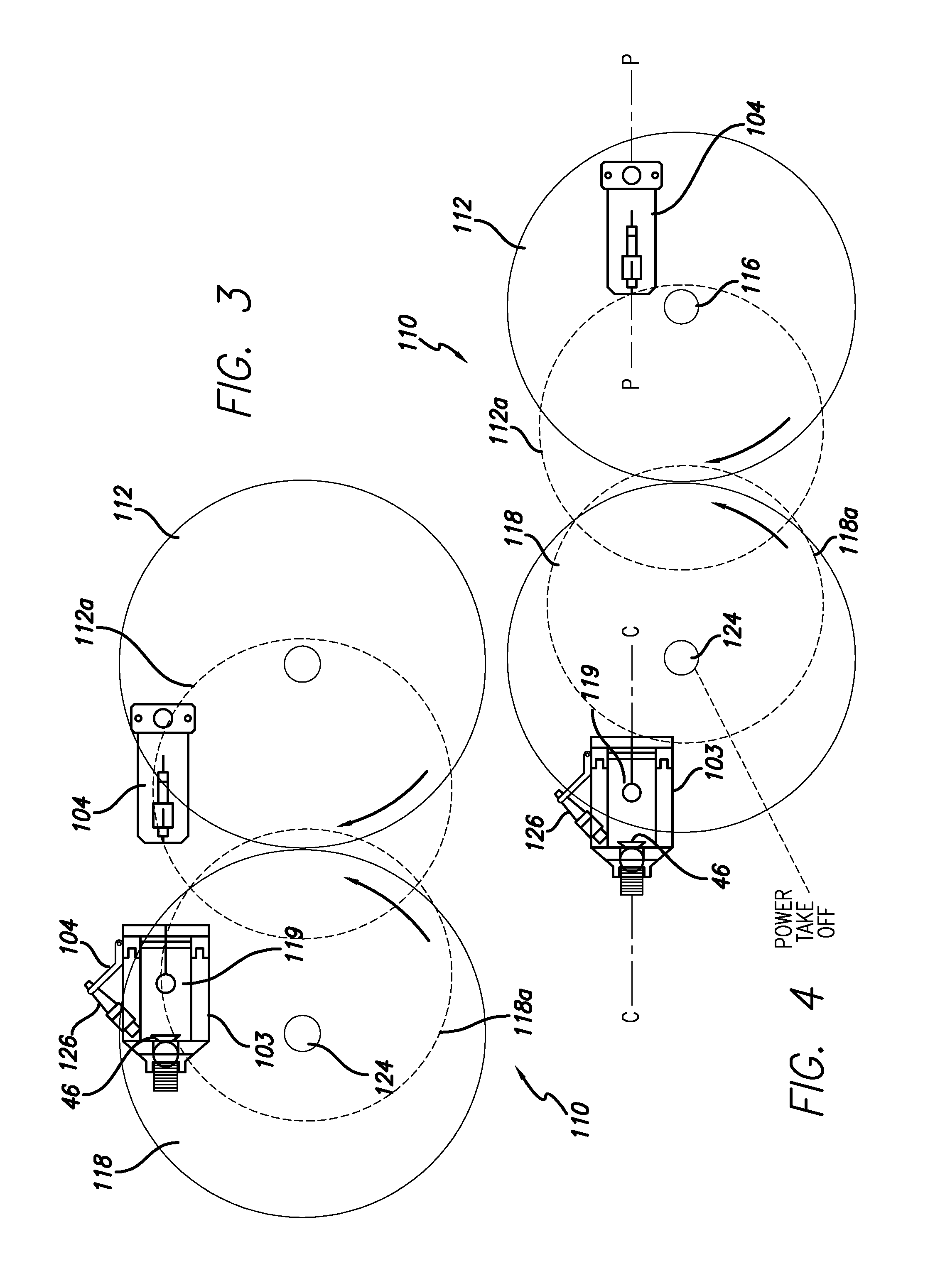Non-reciprocating, orbital, internal combustion engine
a technology of internal combustion engine and non-reciprocity, applied in the field of engines, can solve the problems of less supporting hardware, achieve the effects of reducing frictional losses, eliminating inertial losses, and eliminating angular oscillation of connecting rods
- Summary
- Abstract
- Description
- Claims
- Application Information
AI Technical Summary
Benefits of technology
Problems solved by technology
Method used
Image
Examples
specific embodiments
[0044]In the ensuing description, left, right and center, and upper and lower are used with reference to the FIGS. 5-1, and following; in practice the engine 110 can be arranged in various orientations.
[0045]With reference to FIGS. 5-1 to 5-6, an embodiment of the engine 110 is shown having four cylinders 103 carried on a single cylinder carrier wheel 118 and four pistons 104 carried on a piston carrier wheel 112. The number of cylinder and piston pairs can be varied as can the number of engines 110 connected together, e.g. by stacking with wheel hubs interconnected. Engine 110 is shown to have for purposes of description three zones, left, center and right, labeled Z1, Z2, and Z3; in practice the engine is an integrated whole.
[0046]The first zone Z1 corresponding to the left side of the engine 110 is shown to comprise a portion of the cylinder carrier wheel 118 and a cylinder 103-1 and related parts to be described. Second zone Z2 corresponding to the center portion of the engine 1...
PUM
 Login to View More
Login to View More Abstract
Description
Claims
Application Information
 Login to View More
Login to View More - R&D
- Intellectual Property
- Life Sciences
- Materials
- Tech Scout
- Unparalleled Data Quality
- Higher Quality Content
- 60% Fewer Hallucinations
Browse by: Latest US Patents, China's latest patents, Technical Efficacy Thesaurus, Application Domain, Technology Topic, Popular Technical Reports.
© 2025 PatSnap. All rights reserved.Legal|Privacy policy|Modern Slavery Act Transparency Statement|Sitemap|About US| Contact US: help@patsnap.com



